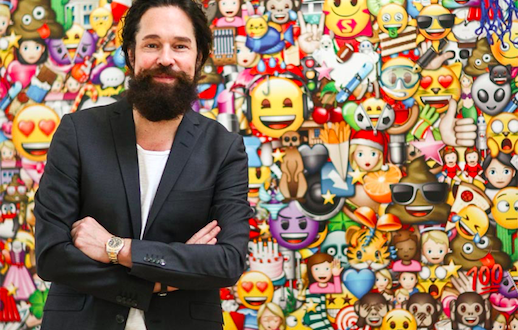When it comes to market awareness, there’s only a handful of brands that can boast the kind of universality that The Emoji Company enjoys today. Transcendent of language barriers and reliant only on the oldest method of communication since humans first recognised their own faces, it’s small wonder that Emoji’s bank of expression icons has become such a global hit.
Throw in a couple of cute monkey emojis and a poo with eyes, and what you’ve got there is a brand ripe for the licensing space.
Testament to that, it was at this year’s Licensing Awards that The Emoji Company took home the highly coveted accolade of Best Teen or Adult Licensed Property, an industry award and the reward of a year of hard work from not only The Emoji Company itself, but its wealth of licensing partners across the world, that spanned over the past year everything from fashion shows and theme park activations, to hot air balloons floating over Bristol.
Now, just at The Emoji Company looks to build on its awards success both here in the UK, and upon the world’s stage, and as the team makes its final preparations for Brand Licensing Europe next week, Licensing.biz sits down with founder, Marco Huesges for a little one-to-one.
Can you talk us through the last year for The Emoji Company? What success have you seen, and across what categories?
They year 2019, such as in previous years, has been extremely successful for the brand and had a great impact on the brand’s visibility across various categories.
In the middle of the year we launched the second wave with Ferrero KinderJoy, a fantastic global partnership that is now expanded into several new territories. This August, we launched a worldwide kids meal activation program with the Burger King, powered by TV advertisement and including 30 different emoji brand plush toys that consumers can collect.
With the Italian fashion brand Tezenis, part of Calzedonia, we released a sleepwear and underwear collection across Europe. With Kidiliz Group in France we have built a joyful partnership and developed a beautiful kids apparel range that includes 3D elements, zippers and patches.
Meanwhile, with the leading food retail chain Aldi in Germany, this September saw the launch of a collectable emoji figurine promotion. The launch included an Aldi emoji-App and was powered by lots of marketing actions. including TV advertisement.
All through 2019 we have been very strong in promotions and loyalty programs across Europe and in Asia. Our global business within the food and beverage area is extremely strong and so is the apparel and promotions business.
You’ve had a year of tremendous expansion across the food and drink space, as well as apparel, accessories and then more out of the box partnerships. What is the strength of the emoji® brand and why does it lend itself to such an eclectic mix?
It is exactly this electric vibrant mix of global acceptance and great partnerships that makes the brand so incredibly popular and universally successful. The brand is not limited to standard licensing categories and reaches out into so many different segments.
Our content library is a one of a kind offer to the market and enables clients to spread their emotions and messages in the most expressive way, really reaching out to the consumer. The brand is constantly evolving and we permanently build new product strategies, promotions, events or marketing campaigns with our global licensees.
Over the years, the brand has grown on a sustained basis and is now established as a true global lifestyle brand.
What is your vision for the emoji brand over the next five to ten years? How do you think emoji’s licensing program will be reflective of the evolving licensing industry?
I’m sure that we will see lots of changes in the next five years within the industry, and that there will be new models next to traditional licensing. As a brand owner we need to constantly evolve and must monitor the market, its changes and its opportunities.
From a brand perspective we need to listen to the consumer and are obligated to work even closer with our licensing partners and retailers to ensure consumer engagement and maintain brand popularity.
On the licensing and operational business side, we have to watch the development for new online platforms that intend to operate as a hub for the entire licensing industry and use their incredible scope and ability to reach consumers globally.
I am convinced we will see some interesting developments over the coming years, including additional market consolidation and fusion of established and new, in particular digital processes.





